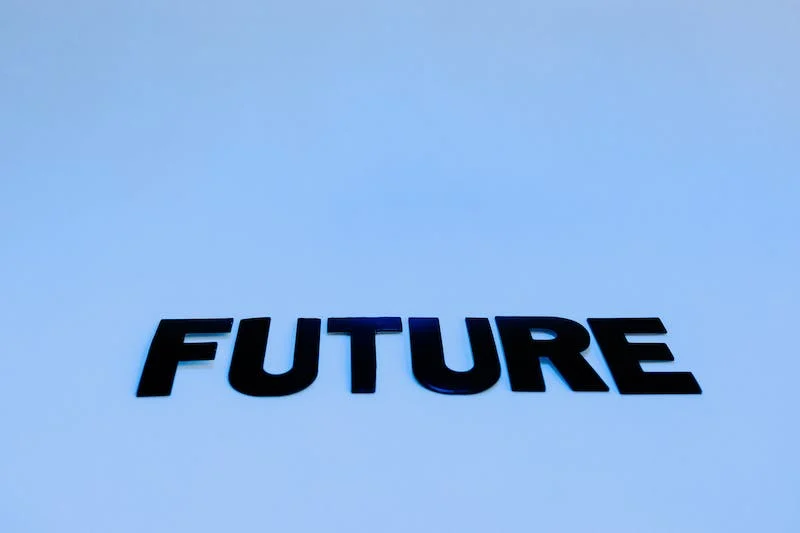Contents
- 1. The Environmental Cost of the Digital Revolution
- 2. What Are Green Digital Practices?
- 3. The Rise of Green Data Centers
- 4. Smarter Software: The New Frontier of Green IT
- 5. Circular Economy: Designing for Reuse and Longevity
- 6. Measuring the Digital Carbon Footprint
- 7. AI for Sustainability: The Paradox and the Promise
- 8. The Role of Governance and Regulation
- 9. Startups Leading the Green Tech Revolution
- 10. The Economic Case for Green Digital Practices
- 11. Looking Ahead: The Path to Net-Zero Digital
- Conclusion: Innovation With a Conscience
Meta Description:
Discover how Sustainability and Green Digital Practices are transforming business and technology in 2025 — from energy-efficient data centers to circular economy models and eco-conscious algorithms.

Technology and Climate Correspondent
When we think about sustainability, we often picture electric cars, solar panels, and zero-waste packaging. But behind the scenes, the world’s digital infrastructure — the cloud servers, algorithms, and devices that power our modern lives — has quietly become one of the planet’s largest consumers of energy.
In 2025, the conversation has shifted. It’s no longer just about “going digital.” It’s about going digital sustainably.
From green IT infrastructure to circular economy business models, technology leaders are racing to shrink their carbon footprints while keeping up with demand for data, AI, and global connectivity. The movement toward Sustainability and Green Digital Practices isn’t just good for the planet — it’s becoming a competitive advantage in the digital economy.
1. The Environmental Cost of the Digital Revolution
Behind every click, stream, and AI query lies a hidden carbon footprint.
According to the International Energy Agency (IEA), data centers now consume nearly 4% of global electricity, and the rise of AI computing could double that figure by 2030 if unchecked.
The explosion of digital services — from streaming and e-commerce to machine learning — has accelerated demand for energy-hungry hardware and round-the-clock connectivity.
“The cloud isn’t invisible. It has a physical footprint made of steel, silicon, and electricity,” says Dr. Leah Brooks, a sustainability researcher at the World Economic Forum. “The challenge is how to make that infrastructure truly green.”
This digital demand also drives emissions from hardware manufacturing, e-waste, and supply chains that rely on resource-intensive materials like lithium and rare earth metals.
2. What Are Green Digital Practices?
“Green digital practices” refer to the strategies and technologies designed to reduce the environmental impact of digital operations — across hardware, software, and data infrastructure.
This encompasses several key areas:
- Green IT: Optimizing hardware, cloud systems, and data centers for energy efficiency.
- Sustainable Software Engineering: Designing algorithms that use fewer computational resources.
- Circular Economy Models: Extending device lifespans, recycling components, and reducing waste.
- Digital Carbon Accounting: Measuring and reporting emissions from digital services.
- Eco-Innovation: Developing digital tools to track, manage, and reduce environmental impact.
As outlined in Industry4o.com’s Sustainability Report, companies integrating these principles are achieving both environmental and economic benefits — reducing costs, enhancing reputation, and meeting investor expectations for ESG compliance.
3. The Rise of Green Data Centers
One of the biggest opportunities for sustainability lies in data centers, the backbone of the digital economy. These facilities power cloud computing, storage, and AI — but they also account for massive energy use and heat output.
To combat this, major players are redesigning data centers with renewable energy, liquid cooling systems, and AI-powered energy optimization.
Notable Examples:
- Microsoft has pledged to run 100% on renewable energy by 2025 and is experimenting with underwater and modular data centers for efficient cooling. (Microsoft Sustainability Blog)
- Google has achieved carbon neutrality since 2007 and now aims to operate all data centers on carbon-free energy, 24/7, by 2030.
- Amazon Web Services (AWS) has invested in large-scale wind and solar farms, reducing carbon emissions per compute unit by more than 45% since 2018.
“Efficiency and sustainability go hand in hand,” says Nikhil Sharma, VP of Infrastructure at AWS. “Our green initiatives save both energy and cost while increasing resilience.”
These innovations are redefining what it means to “scale responsibly” — proving that growth doesn’t have to come at the planet’s expense.
4. Smarter Software: The New Frontier of Green IT
While hardware efficiency grabs headlines, software optimization can have an equally dramatic impact on energy use.
Every digital transaction — from AI inference to database queries — consumes processing power.
Inefficient algorithms waste both electricity and computing resources.
That’s why software engineers are now embracing sustainable coding — designing algorithms that are computationally lighter, more efficient, and energy-aware.
Examples of Green Software Engineering:
- Efficient Algorithms: Optimizing data sorting, caching, and memory usage.
- AI Model Pruning: Reducing redundant neural network layers to lower computation.
- Adaptive Workloads: Dynamically scaling cloud usage based on demand.
- Green Software Foundations: Industry groups like the Green Software Foundation are developing standards for measuring software’s carbon footprint.
“Software efficiency is sustainability,” explains Dr. Arjun Dev, co-founder of the Green Software Foundation. “We used to think optimization was about performance. Now it’s about the planet.”
5. Circular Economy: Designing for Reuse and Longevity
The circular economy is another cornerstone of sustainable digital transformation.
Instead of a linear “make-use-dispose” model, it emphasizes reuse, repair, and recycling — extending product lifespans and reducing waste.
In the tech industry, this means:
- Refurbishing servers, laptops, and devices instead of discarding them.
- Designing hardware with modular, upgradable components.
- Establishing take-back and recycling programs for end-of-life electronics.
Apple’s Daisy Robot, for instance, can disassemble up to 1.2 million iPhones a year, reclaiming precious metals for reuse. Similarly, Dell’s “Closed-Loop Recycling” program reuses materials from old computers to build new ones.
“Circular design isn’t just about recycling — it’s about rethinking ownership and product life,” says Fiona Tan, Head of Circular IT at HP. “Sustainability begins at the drawing board.”
Circular principles are also emerging in software and data: companies now talk about “data lifecycle management” — deleting or archiving unused data to save storage and energy.
6. Measuring the Digital Carbon Footprint
You can’t improve what you don’t measure.
That’s why a new field — Digital Carbon Accounting — is gaining momentum.
Tools like Spherics, Plan A, and Persefoni help companies quantify emissions generated by their digital operations, from cloud computing to employee devices.
Cloud providers are also offering built-in dashboards:
- Google Cloud’s Carbon Footprint Tool shows emissions from virtual machines and workloads.
- Microsoft Cloud for Sustainability provides enterprise-wide tracking and analytics.
- AWS Customer Carbon Footprint Tool reports usage-based emissions by service.
According to DCM Institute’s Green IT Guide, “the shift from estimated reporting to real-time monitoring is a critical milestone in sustainable digital transformation.”
7. AI for Sustainability: The Paradox and the Promise
Artificial intelligence has a dual identity in the sustainability debate.
On one hand, training large language models can generate massive carbon emissions. On the other, AI is also helping fight climate change by optimizing energy use, predicting environmental trends, and improving supply chain efficiency.
Examples of AI-Driven Sustainability:
- Google DeepMind reduced data center cooling energy by 40% using reinforcement learning.
- Siemens uses AI to manage smart grids, reducing energy waste across cities.
- IBM’s Green Horizon uses machine learning to model air pollution and optimize renewable energy usage.
“AI is both part of the problem and part of the solution,” says Dr. Brooks. “The key is responsible deployment — using AI where it offsets more emissions than it creates.”
This principle — known as net-positive AI — is guiding future models toward sustainability-conscious design and deployment.
8. The Role of Governance and Regulation
As sustainability becomes a boardroom priority, governments and regulators are tightening environmental reporting requirements.
In the European Union, the Corporate Sustainability Reporting Directive (CSRD) mandates that large companies disclose environmental and energy impacts — including digital operations.
Similarly, the Greenhouse Gas Protocol for ICT is being adopted globally as the standard for measuring IT-related emissions.
Investors, too, are driving accountability. ESG (Environmental, Social, and Governance) metrics are now integral to valuation and funding decisions. Tech giants and startups alike must show progress in reducing digital carbon footprints.
“Sustainability has moved from a moral obligation to a market expectation,” says Deloitte’s Global Sustainability Leader, Henrik Olsen. “Investors and customers are rewarding transparency.”
9. Startups Leading the Green Tech Revolution
While large corporations dominate the sustainability conversation, a wave of green tech startups is driving innovation from the ground up.
Emerging Players to Watch:
- EcoDataCenter (Sweden): Runs carbon-positive data centers powered entirely by renewables.
- Circular Computing (UK): Remanufactures laptops to as-new condition with 97% lower carbon emissions.
- Submer (Spain): Develops liquid immersion cooling technology to slash data center energy use.
- TerraPass (US): Provides carbon offset solutions for cloud and IT operations.
These companies illustrate how environmental responsibility and profitability can align — offering scalable models for sustainable innovation.
10. The Economic Case for Green Digital Practices
Sustainability isn’t just an ethical imperative — it’s good business.
A Capgemini Research Institute study found that organizations implementing sustainable IT practices saw:
- 11% reduction in costs from energy efficiency
- 16% increase in brand trust among customers
- Up to 20% improvement in investor confidence
Consumers, too, are voting with their wallets. Surveys show that over 70% of millennials prefer brands that demonstrate environmental responsibility.
“Sustainability is no longer a trade-off — it’s a growth strategy,” says Tan. “Companies that invest in green digital practices are the ones leading future markets.”
11. Looking Ahead: The Path to Net-Zero Digital
As we approach 2030 — the key milestone for global net-zero goals — the tech industry has both an opportunity and an obligation to lead.
Emerging concepts like carbon-aware computing, serverless architecture, and renewable-powered cloud grids are paving the way for a sustainable digital future.
Collaboration across sectors will be vital. Governments, academia, corporations, and startups must share innovations, open data, and best practices.
“The digital revolution got us here. The green digital revolution will get us out,” says Dr. Brooks.
Conclusion: Innovation With a Conscience
Technology has always been about progress — faster, smarter, more connected.
But as the cost to the planet becomes clearer, progress must also mean more sustainable.
The companies redefining the digital landscape in 2025 are not just building smarter systems — they’re building responsible ecosystems that respect both innovation and the environment.
In this new era, Sustainability and Green Digital Practices are no longer optional features of digital transformation.
They are its foundation.
“We can’t code our way out of climate change,” says Dr. Dev. “But we can code more responsibly — and that’s a powerful start.”
🔗 Sources & Further Reading
- Industry4o.com – Digital Transformation Trends for 2025
- DCM Institute – Green IT and Digital Sustainability Report 2025
- Microsoft Sustainability Initiatives
See related coverage: The Ethical Tech Imperative: How Security, Privacy, and Responsible AI Are Redefining Digital Business in 2025



